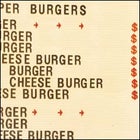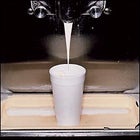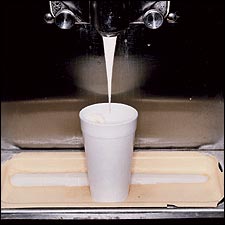Back in our not so distant nutritional past, opponent-vanquishing power was theoretically achieved by shoveling buckets of pasta down your gullet the night before a big event. Today, athletes face a training table sagging under the weight of products designed for every aspect of sports performance—midgame electrolyte replacers like Gatorade, endurance-sustaining carbohydrate infusers like Clif Shot gels, and after-party muscle-healing potions like PowerBar’s Performance Recovery sports drink.
Plate Tectonics
Dig into the world of delicious, nutritious eats, so you can feel great, play hard, live longer—and go for the gusto. for the full ���ϳԹ��� overview.when to eat

when to eat

“Athletes know they need a higher level of, and commitment to, training if they want to build the desired strength they need to win,” says former Ironman champ and Boulder-based multisport coach Dave Scott. “Maintaining that level of intensity day after day comes down to what you put in your stomach.”
Enter the fast-growing strategy of nutrient timing. Even if a jog with the dog is the extent of your fitness regimen, you can benefit from Scott’s nutritional guidance as much as his pro-caliber clients. Our plan below is based on a 90-minute workout and outlines your minute-by-minute nutrition breakdown.
Peak-Performance Timeline
Day of Event—If your workout or event is scheduled for the afternoon, reduce the size of your meals and increase the diversity and size of your between-meal snacks, such as nuts, yogurt, and fruit. You’ll want roughly three-quarters of the day’s calories to come from meals; the other quarter should come from snacks. Drink enough to make your urine light yellow. Heading out first thing in the morning? Follow these steps the day before.
–0:10—Weigh yourself naked ten minutes before you work out; afterwards, you’ll need to know how much fluid weight you’ve lost during the workout.
0:00-0:15—Start activity. Knock back up to eight ounces of fluids every 15 minutes. “The first thing to cause muscle fatigue isn’t stress, lack of sleep, lactic acid, or muscle-fuel levels; it’s dehydration,” says Scott. Try a sports drink that’s 6 to 8 percent sugar for easy digestion.
0:16-1:30—Nibble an energy bar (avoid hard-to-digest high-protein bars) or gel, and keep sucking down fluids. During your session, replace up to a third of the calories you’re burning. A 170-pound man exercising at a moderate pace burns 550 calories an hour. Over 90 minutes, he’ll want to consume up to 275 calories.
1:31—As soon as your activity is over, weigh yourself naked, since your clothes are soaked with sweat. You want to replace 1.5 times the weight you’ve lost during your workout with fluids (15 fluid ounces of water equals one pound).
1:31-2:15—Here’s your critical recovery zone, known as the glycogen window. Within 45 minutes of the end of your workout, replace half the calories you just burned, minus the calories downed during your session. (E.g., in 90 minutes, our 170-pound man burned 825 calories and ingested 250 calories. Now he should eat 288 calories, 60 percent of which ought to be high-quality carbohydrates.) After this window, strive to make a third of your recovery food vitamin- and mineral-rich—leafy greens and fruits and vegetables. Immunity-boosting vitamins E and C are the most vital and can be found in blueberries, raspberries, red beans, and kiwi. Get in omega-3 fatty acids for heart health; they’re abundant in cold-water fish like salmon, as well as walnuts, almonds, and pumpkinseeds.
2:16-3:30—If you haven’t had to urinate within two hours of a workout, you’re dehydrated, so drink up. Consume the remaining half of the calories burned from your exercise session within three hours of exercise.
Nighttime—“Your metabolism revs up during the day but slows down at night, when the body stores more food as fat,” says Scott. “So get your dinner in before 7 p.m.”


